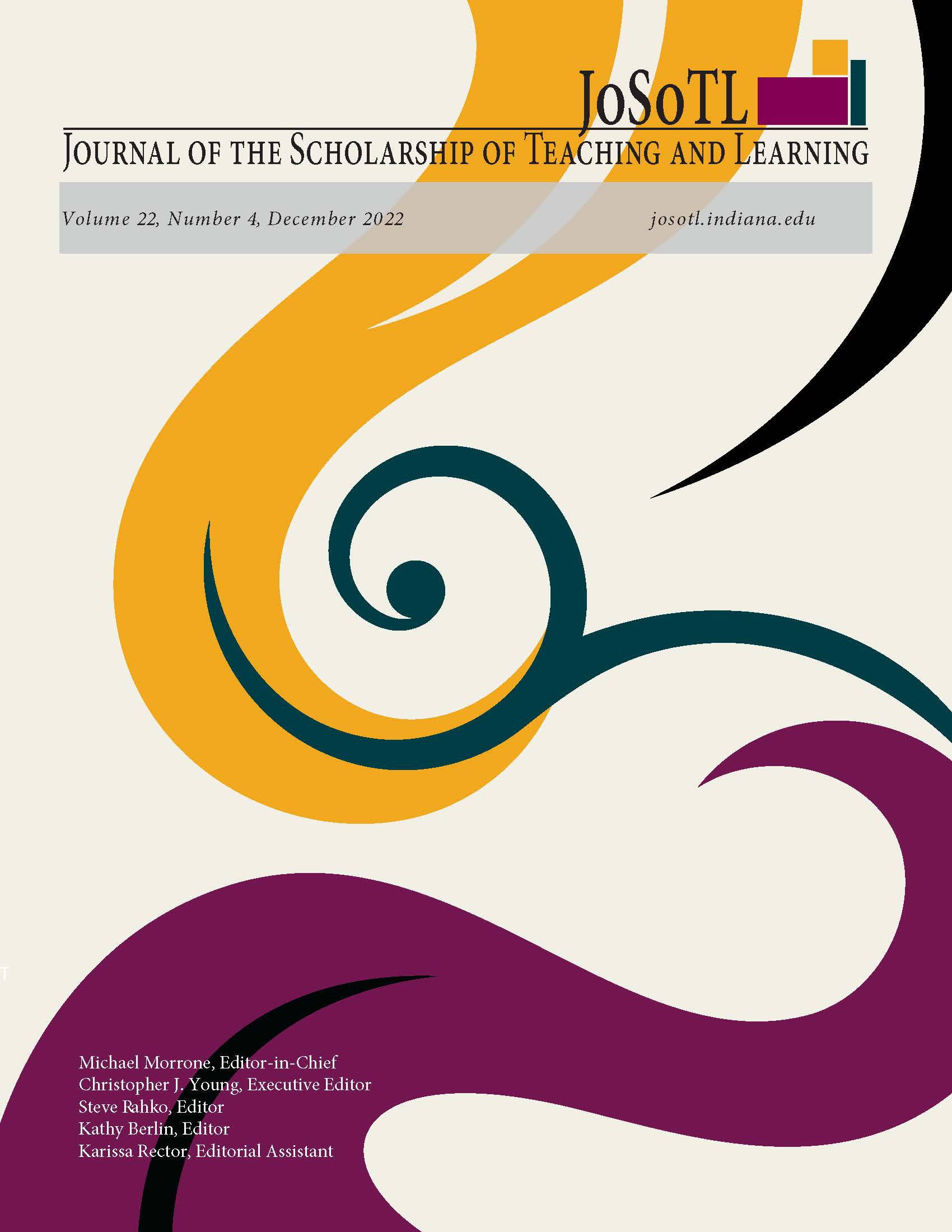Secure Attachment Messaging (SAM) as a Learning Mechanism in a College Course
Main Article Content
Abstract
Grounded in attachment theory, the goal of the present study was to examine whether students’ (N = 205) learning would be impacted by Secure Attachment Messaging (SAM) during lecture in a college course. Students were presented with SAM every other week as part of the regular PowerPoint slides. At the end of each class, they completed a multiple-choice quiz to assess their comprehension of the material. Their quiz responses were recorded using a student response system called Top Hat Monocle. We predicted that the SAM would enhance students’ feelings of security, irrespective of their pre-existing attachment schemas, and thereby augment learning. Our hypothesis was statistically supported in that quiz scores were higher for days SAM were used versus not used in lecture. Overall percentages from the course were also compared with three other sections of the same course in which SAM were not used. Students’ percentages from the SAM course were significantly higher than the three other sections.
Downloads
Article Details

This work is licensed under a Creative Commons Attribution 4.0 International License.
- Authors retain copyright and grant the Journal of the Scholarship of Teaching and Learning (JoSoTL) right of first publication with the work simultaneously licensed under a Creative Commons Attribution License, (CC-BY) 4.0 International, allowing others to share the work with proper acknowledgement and citation of the work's authorship and initial publication in the Journal of the Scholarship of Teaching and Learning.
- Authors are able to enter separate, additional contractual agreements for the non-exclusive distribution of the journal's published version of the work (e.g., post it to an institutional repository or publish it in a book), with an acknowledgement of its initial publication in the Journal of the Scholarship of Teaching and Learning.
- In pursuit of manuscripts of the highest quality, multiple opportunities for mentoring, and greater reach and citation of JoSoTL publications, JoSoTL encourages authors to share their drafts to seek feedback from relevant communities unless the manuscript is already under review or in the publication queue after being accepted. In other words, to be eligible for publication in JoSoTL, manuscripts should not be shared publicly (e.g., online), while under review (after being initially submitted, or after being revised and resubmitted for reconsideration), or upon notice of acceptance and before publication. Once published, authors are strongly encouraged to share the published version widely, with an acknowledgement of its initial publication in the Journal of the Scholarship of Teaching and Learning.
References
Cassidy, J. (2016). The nature of the child’s ties. In J. Cassidy & P. R. Shaver (Eds.), Handbook of attachment (3rd ed.) (pp. 3-24). New York: Guilford Press.
Dykeman, B. F. (2011). Statistics anxiety: Antecedents and instructional interventions. Education, 132(2), 441-446.
Maher, F. A., & Tetreault, M. T. (1997). Learning in the dark: How assumptions of Whiteness shape classroom knowledge. Harvard Educational Review, 67(2), 321-349.
https://doi.org/10.17763/haer.67.2.j7866368086k9491
Mikulincer, M., & Shaver, P. R. (2001). Attachment theory and intergroup bias: Evidence that priming the secure base schema attenuates negative reactions to out-groups. Journal of Personality and Social Psychology, 81, 97-115. https://doi.org/10.1037/0022-3514.81.1.97
Mikulincer, M., & Shaver, P. R. (2007b). Boosting attachment security to promote mental health, prosocial values, and inter-group tolerance. Psychological Inquiry, 18, 139-156. https://doi.org/10.1080/10478400701512646
Mikulincer, M., Shaver, P. R., & Rom, E. (2011). The effects of implicit and explicit security priming on creative problem solving. Cognition and Emotion, 25(3), 519-531. https://doi.org/10.1080/02699931.2010.540110
